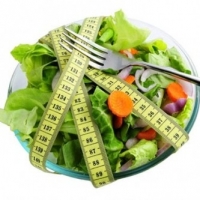The Glycemic Index Food Chart
The numbers on the glycemic index food chart ranges from 0 to 100, and every food rated on it has its own value. Foods listed higher than 70 has a high GI ranking, which means these foods are quickly digested and converted into glucose. When you have too much glucose in your body, it will then take action and try to clear those excess glucose out which will then cause you to feel hungry again. With very little glucose, you will then be compelled to consume foods with higher glycemic and so on. For you to be able to have a good health, you should find a way to break this cycle.
On the other hand, low glycemic foods are digested slowly which means your blood sugar will not rise quickly. As mentioned above, foods above 70 are high. Foods that range from 55 to 70 are moderate and anything below 50 is low. For this, you may want to focus on the foods which are low on the glycemic index food chart.
What you must remember is that, foods that have high glycemic value should not be totally eliminated. You can still eat these foods as long as it is combined with something that has proteins and fats that can help slow down the process. For example, bagel may have a very high value on the glycemic index food chart, but you can combine it with peanut butter, cream cheese or eggs to slow down its conversion into glucose.
The glycemic index food chart concept has lots of benefits. One is that if you are able to find ways to consume foods with lower index score, then you are on your way to healthy eating. Aside from that, it will make you feel full longer after each meal and so you may not need to snack after eating breakfast or lunch since you are already feeling satisfied. For both diabetics and health-conscious individuals, this type of diet can make you feel more satisfied, less apt to craving for unhealthy foods and can make you healthier.
Related Articles
-
How to Cure Cellulite, Learn Now
Getting to learn how to cure cellulite really does not have to be all
-
Strip That Fat Reviews
I had read a lot of Strip That Fat reviews and was getting curious abo
-
An Expert Guide For Quick Weight Loss
If you are looking for a perfect diet plan for fast weight loss then
-
Fat Burning Furnace - Diet Pills Dangers You Must Know Before Buying?
How to Lose 26 Pounds in 7 Weeks! Are you aware of diet pills dangers
-
Maqui Berry Magic: Exactly how This Fruit Can Provide Benefit to You
From time to time there is really a brand new health food trend tha
-
What Weight Loss Plan Could Be Beneficial To You
Fat loss programs now are getting to look more and more like the get a
- DON'T MISS
- How To Lose 67 Pounds - Eat Fast Metabolism Foods That Are Very Easy To Prepare At Home!
- Weight Loss Reviews With Real Dose
- Free Diet Plans Can Work for You
- Best Exercise to Lose Belly Fat
- Weight Loss Surgery Contributes to Improved Quality of Life
- Battle Again Towards Starvation With These Methods
- A Look at ProShape RX
- Slim Down by Losing Fat and Gaining Muscle
- The Best Free Weight Loss Program for natural weight loss
- Achieve Weight Loss Success With These Tips




